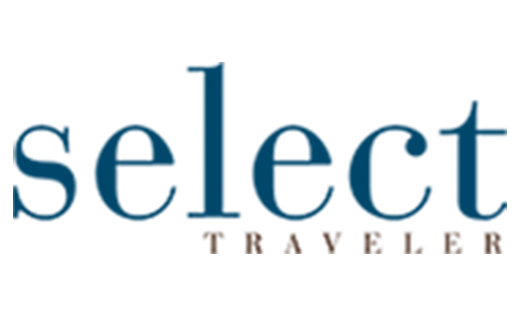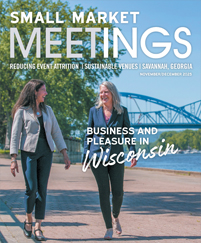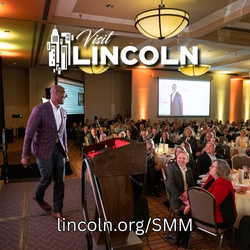We’d all like to squeeze more seconds into our schedules, and as summertime arrives and the sunshine lasts longer, it’s natural to want to shrink our work schedules and stretch our personal time. Here are five ideas to lighten the workload and shorten the workday.
Accept an Assist from a CVB
Being advised to use a convention and visitors bureau’s meeting planning services is like being reminded to eat your vegetables. You know it’s a good idea, but you don’t always follow through. Yet, there aren’t many better ways to get a lot of help at little to no cost.
Choose Lansing, the tourism and meeting marketing arm for Lansing, Michigan, spells out its meeting planning services on its website (lansing.org). It’s a long list of services, all free: customized maps, microsites for hotel block info, photos and graphics for websites and social media, on-site registration support, and connections to suppliers and speakers. At a time when it’s hard to get short-staffed hotels and venues to respond to queries, planners often discover that having the CVB’s assistance is especially helpful. As Choose Lansing points out, “Our team has established relationships with hotel contacts, and we’re able to more quickly connect planners to hotel staff.”
Stay on Track with a Checklist
Creating and using checklists can save time and help a conference run more smoothly and efficiently. In his book “The Checklist Manifesto,” writer and physician Atul Gawande shows how experts in many fields use checklists to ensure desired outcomes and even, in some cases, to ensure safety. Gawande points out that when we make mistakes, there are two reasons: one, we don’t know enough about what we are doing, and two, we aren’t making proper use of what we do know. Most mistakes, he says, are rooted in the latter. As we proceed through processes that we’ve done many times over, like planning a conference, a checklist can take pressure off our overtaxed brains so that we don’t forget important steps. Checklists can also serve as auditing systems, a way to make sure everyone has completed their tasks. Checklists help avoid the stumbles that eat up time and money when important steps in any process are forgotten.
Reach for Helping Hands
Get more hands on deck in a hurry by recruiting members or supporters as conference volunteers. Granted, it takes time to recruit, train and organize a crew, but dedicated volunteers can cover a lot of ground.
If you decide to use volunteers, keep a few things in mind. First, sign them up early, especially if your conference is large. Four to six months ahead isn’t too soon. Get the word out by social media, newsletters and word of mouth. Handpick people who you know will fit specific tasks. Use a volunteer scheduling tool so everyone knows where to be, when to be there and what to do. During the event, a mobile app can connect everyone, so questions are quickly answered, and unexpected issues are resolved. And always thank volunteers in a solid way. Thank-you notes, small gifts and volunteer-recognition meals or happy hours — any or all are nice ways to say thanks, and the gesture may make volunteers more likely to step up next year.
Use Your Time Well
Worried you’re not using your time as well as you could? Of course you aren’t. We all have habits that eat away at our days, and you likely know what yours are. Do you let interruptions derail you? Being interrupted adds stress, exhaustion and errors, and studies show it takes about 20 minutes to get back on track after you’ve been interrupted. Solutions are fairly simple: Turn off your phone, close your door, schedule a meeting with yourself — whatever it takes to have some uninterrupted time to power through the piles on your desk. Speaking of which, if your desk is a mess, it’s likely stealing your valuable time. Ever record how much time you spend looking for things that have gone missing? Could a professional organizer or even a coworker with a dominant organizing gene help you straighten it out? Other key ways to protect your time include saying “no” and delegating more. You are not the only person who can do things.
Tune in to Tech
We all worry about tech taking over our lives. But when it’s used wisely, technology is a tremendous time-saver. Of course, there’s a good bit of overwhelm. As Score pointed out in a recent article, a common app like Outlook is only used to 5% of its potential. Now, in addition to apps, meeting planners are using AI, most often to handle mundane administrative tasks, like registration and scheduling but also, increasingly, to analyze data. In a recent interview with Destination Colorado (destinationcolorado.com) a planner said her organization used AI to analyze answers to two questions it had asked its membership: “What do you value most about membership?” and “What service or product could we provide to help you most?” The ranked answers are helping guide membership retention and recruitment efforts. So, how are planners learning to use AI? Most recommend hands-on learning by simply trying a few AI-driven programs out there. But all are also attending sessions at industry conferences, signing up for online workshops and watching TikTok and YouTube videos. PCMA’s Spark, an AI-powered planning tool, gets frequent mentions.












